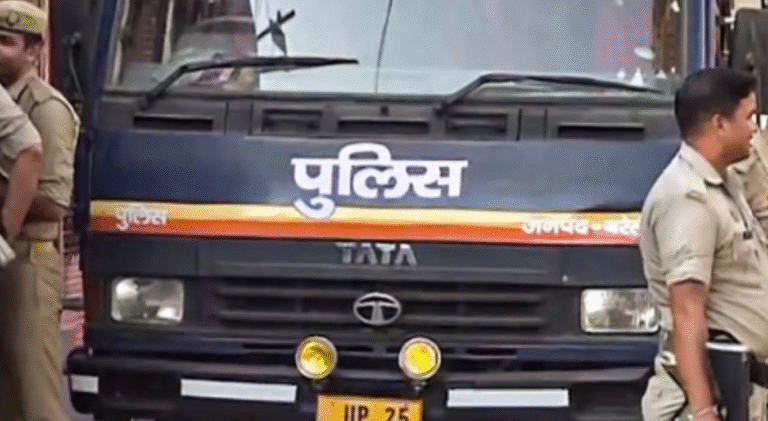
September 12, 2025 – In the bustling lanes of a small village near Lucknow, Sunita Devi used to spend her days worrying about the next meal for her three kids. Her husband worked odd jobs as a daily laborer, but money was always tight. That changed six months ago when a simple sewing machine arrived at her doorstep – not just any machine, but one that came with training and a shot at independence. “I feel like I’ve got wings now,” Sunita says with a wide smile, her fingers flying over the fabric as she stitches blouses for neighbors. She’s one of thousands of women across India whose stories are being rewritten thanks to the PM Silai Machine Yojana, a key part of the broader PM Vishwakarma scheme. Launched to honor traditional craftspeople, this initiative is breathing fresh life into rural homes and urban workshops alike, especially for women eager to build their own futures.
As we hit the midpoint of 2025, the scheme is picking up steam. Over 4 million registrations have poured in for tailoring alone, making it one of the top trades under PM Vishwakarma. The government reports that more than 29 lakh artisans have already tasted its benefits, from free skill classes to cash for tools. In Uttar Pradesh alone, districts like hers have seen sewing hubs sprout up, turning idle hands into buzzing businesses. It’s not just about handing out machines; it’s about sparking a chain reaction – women earning, families eating better, and communities growing stronger. With monsoon rains easing and festive orders rolling in, officials say this could be the year the scheme hits its stride, aiming to reach even more corners of the country.
A Quick Look Back: How the Scheme Took Shape
The PM Silai Machine Yojana isn’t some fly-by-night idea. It grew out of the PM Vishwakarma Yojana, kicked off by Prime Minister Narendra Modi back in September 2023 to celebrate the unsung heroes of India’s craft world—think tailors, carpenters, and potters who keep our traditions alive. Tailoring, or “darzi” work as it’s fondly called, got a special spotlight because it’s a skill so many women already know from home, but rarely turn into steady pay.
By early 2025, the focus sharpened on sewing machines as the go-to tool. In February, the PM announced plans to get 50,000 made-in-India machines into women’s hands per state, giving a much-needed boost to local factories hit hard by cheap imports. This wasn’t just talk; distributions started rolling out in March, starting with pilot runs in states like Punjab and Tamil Nadu. What sets it apart from older programs? It’s wrapped in the bigger Vishwakarma umbrella, which means not only the machine but also training and loans to help folks scale up. No more stitching in the dark – women get classes on modern cuts, marketing their work, even selling online. It’s like the government saying, “We’ve got your back, now go make something beautiful.”
Critics back in 2022 called similar ideas fake news, but this one’s the real deal, backed by the Ministry of Micro, Small and Medium Enterprises. Over the past year, partnerships with Common Service Centers have made it easier for even remote villages to join in. And with India’s textile exports eyeing a 20% jump this year, the timing couldn’t be better. Women like Sunita aren’t just sewing clothes; they’re weaving threads of economic freedom.
Fresh Buzz: What’s New in September 2025
If you’re tuning in now, here’s the scoop on the latest. As of late August, tailoring registrations under PM Vishwakarma crossed 4.01 lakh nationwide, third behind masons and carpenters. That’s a 30% spike from June, thanks to awareness drives during Independence Day events. In Haryana, over 10,000 women got their kits last month, with machines buzzing in self-help groups across Gurgaon and Faridabad. Tamil Nadu followed suit, distributing 15,500 advanced models to women’s co-ops, complete with a 10% subsidy on top.
The big win? Digital tracking. Now, you can check your application status on the PM Vishwakarma portal in real-time, cutting down wait times from months to weeks. For tailors, the e-voucher system is a game-changer—₹15,000 straight to your account to buy a quality machine from approved sellers. No middlemen, no hassles. And get this: Starting this Diwali season, the scheme ties in with e-commerce platforms, helping new stitchers list their designs on sites like Flipkart’s artisan corner.
But it’s not all smooth sailing. Some rural areas grumble about spotty internet slowing applications, so the government just rolled out mobile vans with CSC staff to help out. In Maharashtra, a fresh batch of 5,000 forms opened in July for rural women, closing end of this month. Officials promise more such drives, aiming to hit 50 lakh total beneficiaries by year-end. For women, it’s extra sweet—priority slots for widows and differently-abled folks, plus stories pouring in of families pulling out of debt traps.
Who Gets In and What Do They Gain?
Let’s break it down plain and simple. You don’t need a fancy degree or big savings to qualify. If you’re an Indian citizen over 23, working (or wanting to) in one of 18 traditional trades—like tailoring—you’re in the running. Family income caps at ₹1.5 lakh a year, and you’ve got to show some proof of your craft, even if it’s just family hand-me-down skills. Women get a nudge here, especially if you’re from SC/ST/OBC groups or heading a single-parent home.
The perks? Start with recognition: A fancy PM Vishwakarma ID card that opens doors to banks and markets. Then, free training—five days basic on machine handling and patterns, plus ten more advanced if you want. You pocket ₹500 a day while learning, enough for bus fare and a hot lunch. The star is the toolkit: That ₹15,000 e-voucher covers a solid sewing machine, threads, scissors—the works. It’s not “free” in the handout sense, but it feels that way when it lands in your lap after approval.
Scale up with loans: Up to ₹3 lakh at just 5% interest, no collateral needed for the first chunk. Many use it to rent a small shop or buy an extra machine. Health insurance and market linkages round it out, linking you to buyers who value handmade flair. For a tailor like Sunita, it meant going from five customers a week to 20, pulling in ₹8,000 monthly—double her old family income.
Step by Step: How to Jump In
Worried about paperwork? It’s easier than threading a needle. Head to pmvishwakarma.gov.in or your local CSC—those little shops are everywhere now. Click “Register,” punch in your Aadhaar, mobile, and bank details. Snap a photo showing your work setup, maybe an old machine or fabric scraps. Answer a few questions on your trade, and submit.
Documents? Keep it light: Aadhaar, PAN if you have it, income proof like a ration card, and caste/disability certificate if applicable. Verification takes 15-30 days; a field officer might visit to chat. Once green-lit, training slots open up, followed by the voucher. Track it all via the app—yes, there’s one for your phone.
Pro tip: Go early in the month; slots fill fast during peak seasons. If tech trips you up, CSC folks charge a small fee but walk you through. In states like Andhra Pradesh, they’re even tying it to women’s self-help groups for group applications. Thousands have done it; you can too.
Real Faces, Real Wins: Stories from the Ground
Numbers are great, but hearts beat in stories. Take Rani from Punjab’s Ludhiana, heart of the textile belt. A widow with two school-going boys, she applied in March. By May, her machine arrived, and with it, classes on embroidery designs fetching premium prices. “I used to beg for stitching gigs; now orders come to me,” she shares, her home now a mini workshop employing her sister-in-law. Her monthly take? ₹12,000, enough for tuition and a bit saved.
Down south in Cuddalore, a group of 1,000 women got machines from a partner foundation last week, turning a dusty hall into a stitching circle. One, Lakshmi, a former farmhand, now crafts wedding blouses. “It’s dignity in every stitch,” she says. These tales aren’t outliers—online forums buzz with similar wins, from Delhi housewives starting boutique services to Bihar villagers exporting kurtas.
Challenges pop up, sure. Some machines need maintenance, and market floods can pinch prices. But the scheme’s credit support helps bridge that, with many grads forming co-ops to bulk-buy fabric cheap.
Looking Ahead: A Thread of Hope for Tomorrow
As 2025 winds down, the PM Silai Machine Yojana stands as a quiet revolution. With the five-year run set till 2028, extensions seem likely if demand holds. Imagine: More women bosses, fewer empty kitchens, a textile sector roaring back. It’s not perfect—reach needs to deepen in hills and islands—but the momentum is there.
For Sunita and her kin, it’s already a win. “My boys see me work, and they dream big too,” she muses. That’s the real fabric of change—strong, colorful, and made to last. If you’re a woman with a knack for needles, don’t wait. Stitch your story into this one. The machine’s waiting, and so is your new chapter.



